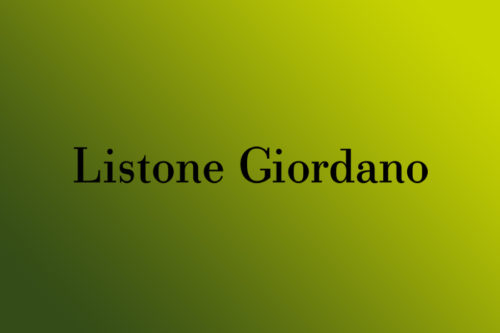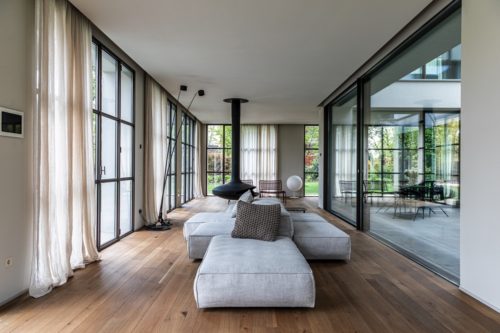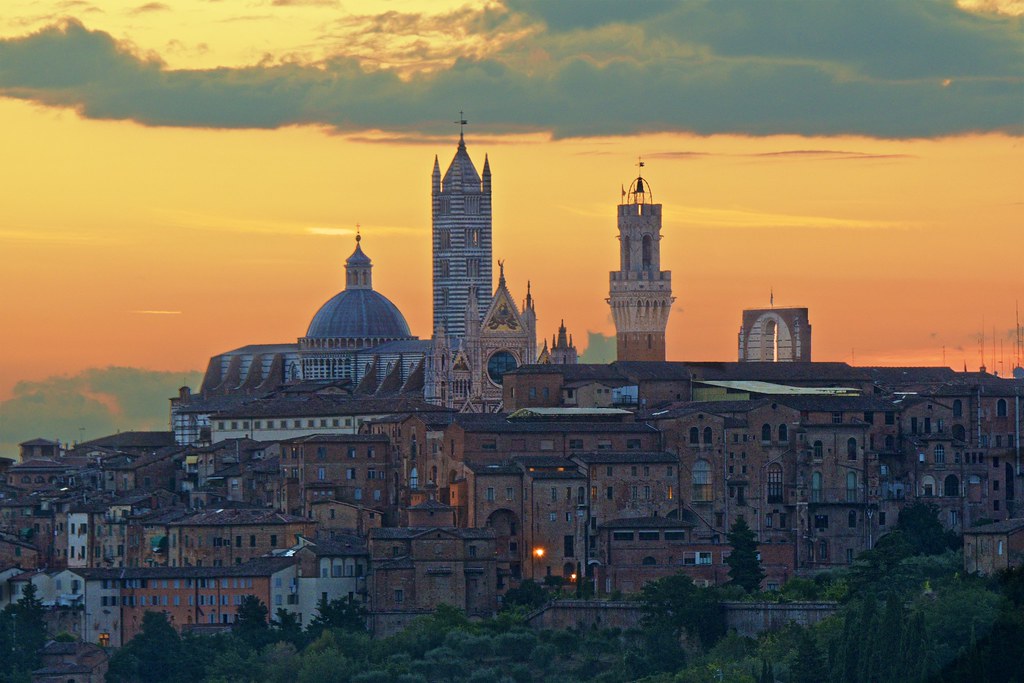
The contemporary spirit of the classic Grand Tour in the heart of Italy reveals the history, secrets and mysteries of the enchanted towns skirting Tuscany and Umbria. You are kindly invited to come on board, sit back and enjoy as we head south.
There are creations that more then anything else are expressions of the authenticity of a place: artworks which could not have been conceived outside of a particular context.
Italy has always been synonymous with art, geniality and nature.
Here it is, the new world. Tangled up in nets, mixed up with virtual realities and parallel worlds, saturated with blaring TV screens and cameras filming non-stop 24 hours a day. Constantly hovering between what is real and what – increasingly often – is not. We do opt instead for what is genuine and authentic. For works of art rather than reproductions. For live music rather than to recordings. For both tangible and impalpable values. A vocation originating from the indissoluble bond between history and a truly genuine lifestyle.
Siena
The Siena cathedral building site was inaugurated on 18th November 1179 by Pope Alexander III, fierce rival of Emperor Frederick Redbeard, who had laid the first stone at Paris’s Notre Dame Cathedral just a few years earlier.
The building spanned a number of centuries, culminating in an extraordinary masterpiece of Romanesque-Gothic architecture destined to host work by Nicola and Giovanni Pisano, Donatello, Pinturicchio, Michelangelo and Bernini.
The floor was also a thing of wonder, defined by Giorgio Vasari “the most beautiful… large and magnificent… that had ever been made”, a wonderful biblical narration in 56 carved marble panels created to sketches by some of the greatest artists in Italy.

Montesiepi
The fascinating mystery-charged Holy Grail saga has survived two millennia, inspiring religious movements, chivalrous orders and the creativity of writers of all eras. A remote corner of sublime Sienese countryside may conceal the solution to the riddle. A precious secret hidden from view and jealously guarded in the minute Montesiepi hermitage founded in 1195 by Bishop Ildebrando Pannocciesci with Pope Lucius’s imprimatur. Just legend? Perhaps.
But there are certainly some curious clues to support it. Like the singular brick dome in concentric rings shaped like an upside down chalice which echoes the precious reliquary. And, above all, the unusual Saint Galgano sword stuck in the rock for over 800 years, right in the middle of the Rotonda. In the vicinity, the ruins of the Cistercian abbey of San Galgano leave visitors speechless.
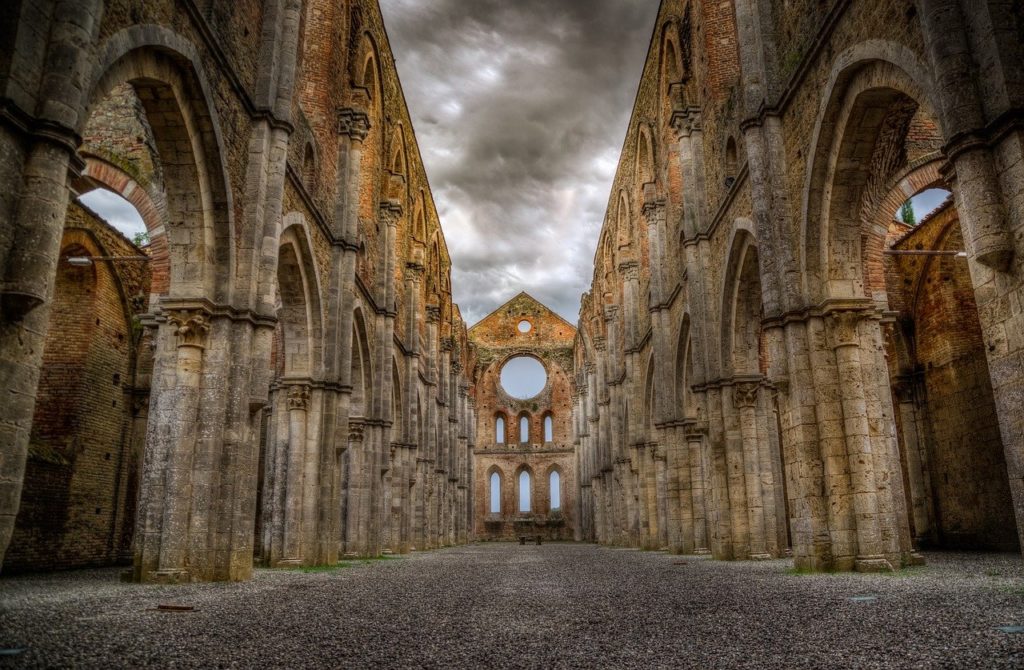
Monteriggioni
In March 1213 the building of Monteriggioni castle began, as a plaque still set in the walls near Porta Romea commemorates. This beautiful fortified village was founded at the behest of the city of Siena which aimed to strengthen its defensive system against its Florentine enemy. The chosen position was totally strategic: the summit of a hill overlooking the Via Francigena, the route which took pilgrims from England and France to Rome in the Middle Ages before continuing to the Holy Land.
Monteriggioni’s unmistakable profile features 570 meters of circular town walls which have reached us intact with their 14 towers and two doors. It is the very same vision which Dante Alighieri had and noted in his Divine Comedy “As with circling round Of turrets, Monteriggioni crowns his walls… “
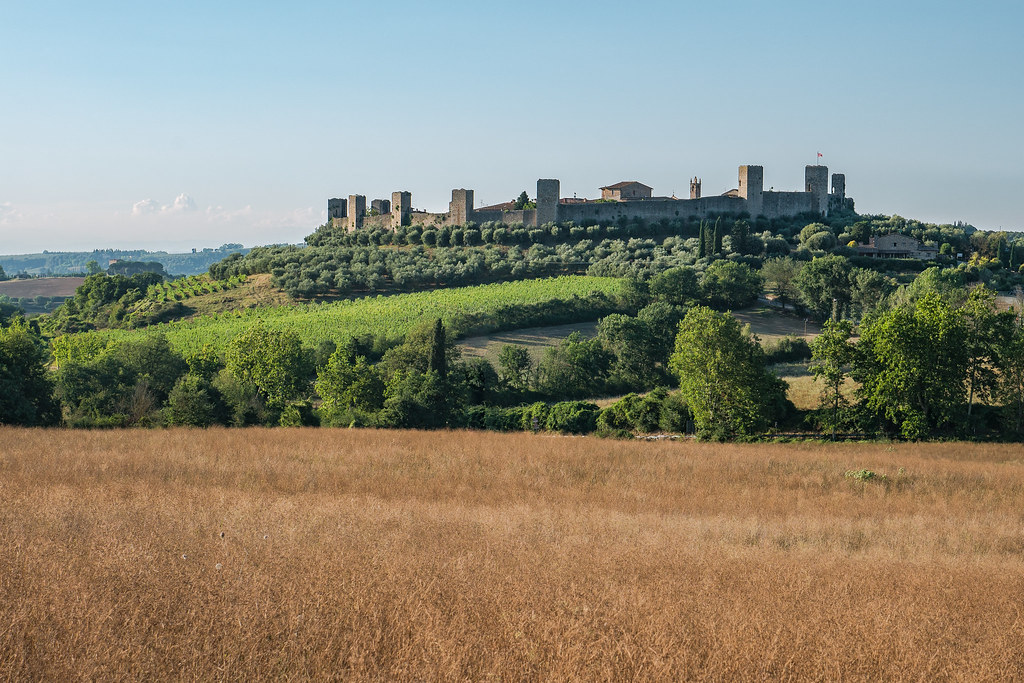
Montalcino
Of Tuscany’s many enchanted places Sant’Antimo Abbey in Montalcino, magically suspended between history, architecture, spirituality and nature, occupies a special place. Tradition has it that the abbey’s first nucleus was founded by Emperor Charlemagne who wanted to leave his mark in the form of a Carolingian chapel. What we admire today is the result of a Romanesque building begun in 1118 by Benedictine monks inspired by French architectural experiences in Cluny and Vignory.
This date appears in the Charta plaque engraved in eternal memory on the steps of the high altar which commemorates a large legacy left by Count Bernardo degli Ardengheschi. One of Sant’Antimo Abbey’s most important possessions was Montalcino castle, very close by and now famous the world over for its wines.
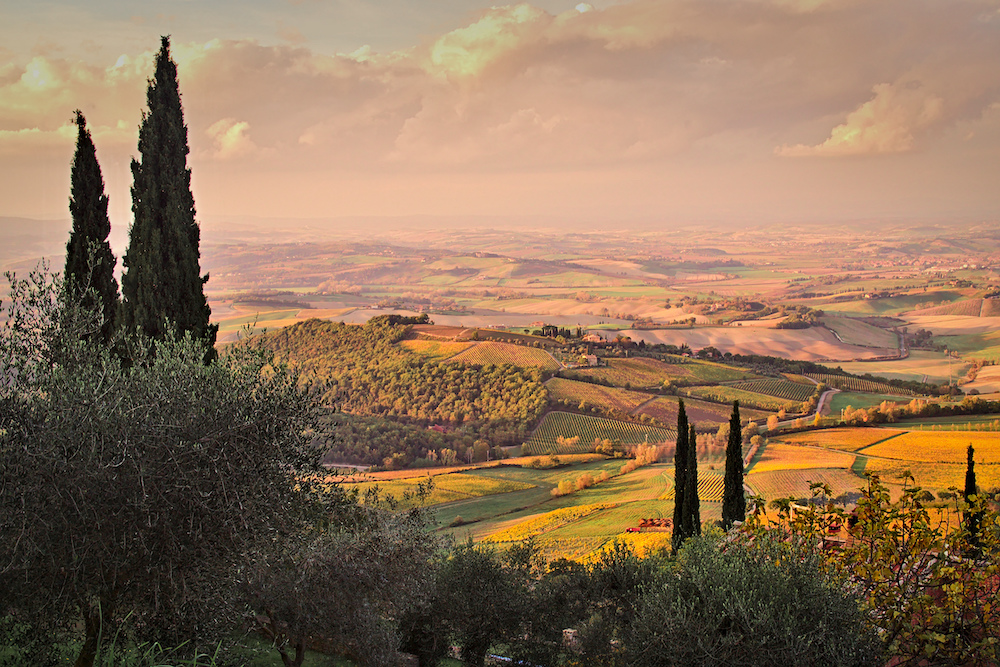
San Gimignano
San Gimignano is an icon of art, beauty and the Italian style of life the world over. Also known as the ‘town of beautiful towers’ it figures in the UNESCO World Heritage list. Historically the town had a grand total of 72 towers built in an ongoing rivalry between families who used civil architecture as a means with which to visually symbolise their economic and social success.
The year 1311 marked the completion of Torre del Podestà, also called Torre Grossa in recognition of the fact that it was the highest of them all at a grand total of 54 metres. Building work on it had begun eleven years earlier under Dante Alighieri’s eyes when he was received in the town at adjacent Palazzo del Podestà in his capacity as Guelph League ambassador.
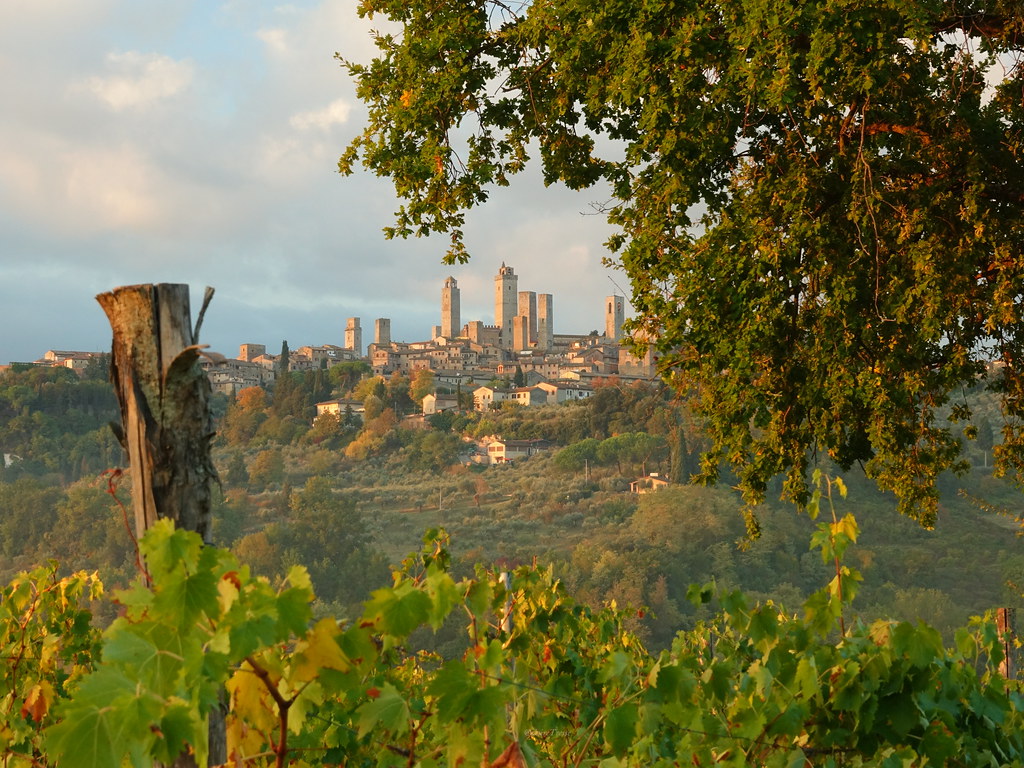
Civita di Bagnoregio
Civita di Bagnoregio, with its Etruscan origins, symbolises the eternal rivalry between human beings and nature.
Building a whole fortified village on the peak of a tufo rock formation to defend it against attackers and then finding an unexpected enemy at the door with an implacable attack by natural forces – earthquakes, landslides and erosion. It is a treasure trove of art and architecture proudly doing battle against the disintegrating action of time. Civita just like Venice. With the sole difference that here the threat is not the lagoon’s high waters but the ongoing crumbling of the village’s fragile rocky foundations.
The colors, atmospheres and art treasures of these lovely towns inspired the Heritage unique wood flooring collection. Thanks to the combination of craftmen’s skills and cutting-edge technologies, Atelier offers the opportunity to create bespoke wood floor applications. The wide range of parquet solutions are the result of experience, passion and expertise of those who have an in-depth knowledge of wood and are able to highlight the authentic characteristics of this natural and ancient material.
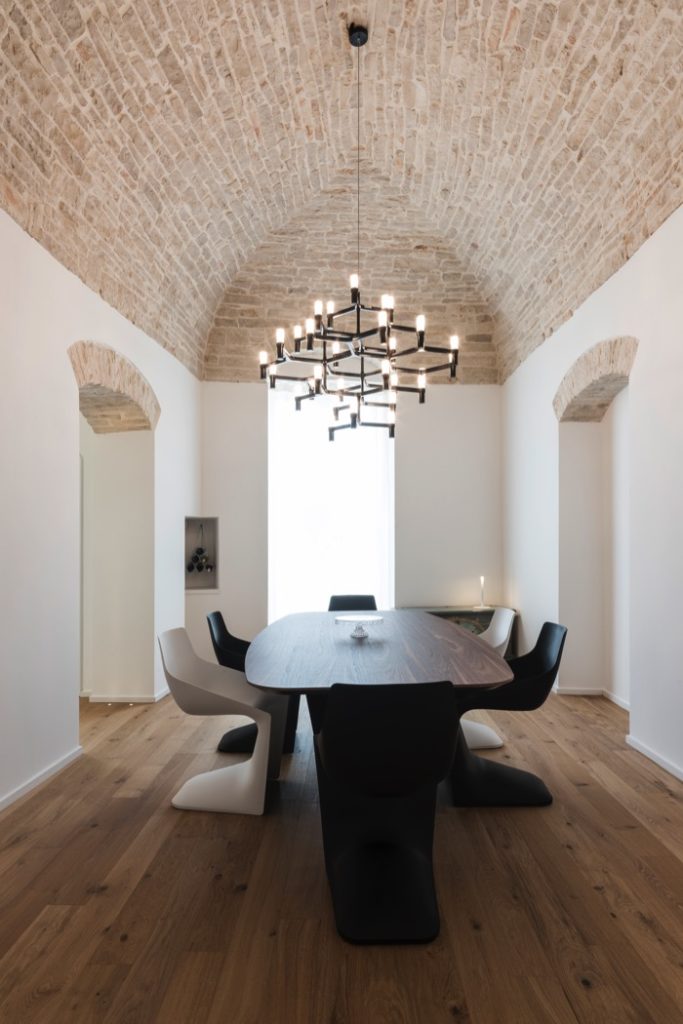
This is the origin of its melancholy definition – ‘the dying town’ – both romantic sounding warning and an appeal to save an entirely unique village. Civita was a free comune from 1140 and St Bonaventura, St Francis’s first biographer, was born here. His biography was the inspiration for Giotto’s Assisi fresco cycle.
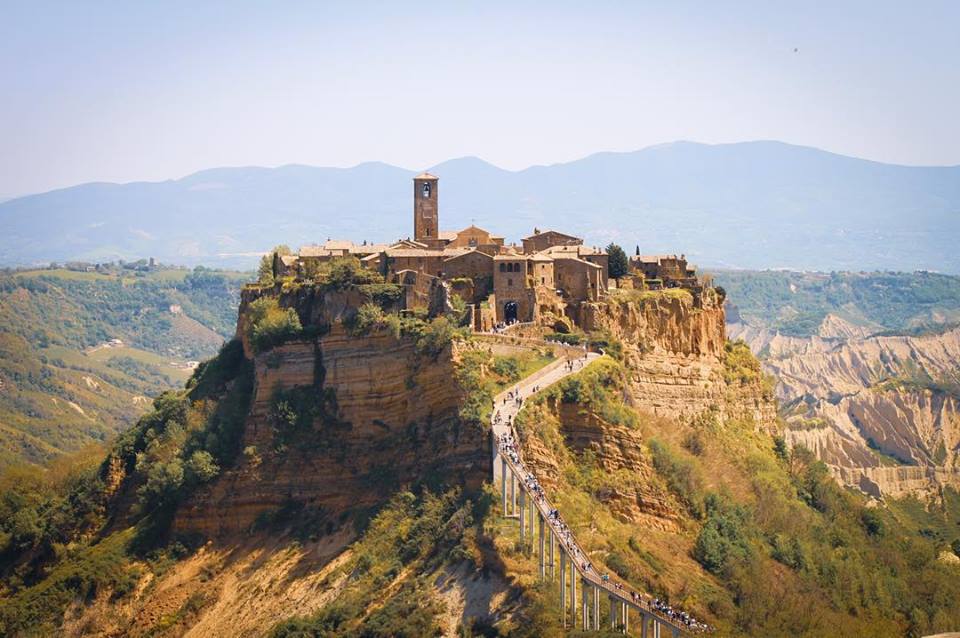
Pienza
When Cardinal Piccolomini was elected pope under the name of Pius II, it changed the destiny of a man together with that of his home town. Minute, sleepy Corsignano was suddenly woken up by previously unheard of attention. In honour of its illustrious fellow citizen it changed its name to Pienza and redesigned its urban fabric to become an ideal city, ambassador of a new cultural sensibility.
An epoch-making vision was carved in stone letters here. In Pienza Humanism flowered fully and germinated the Renaissance with free design utopias and a future-projected outlook as centrestage players. Architect Rossellino followed in the footsteps of maestro Leon Battista Alberti and designed an unusual trapezoid shaped square packed with symbolic meanings.
Work finished in 1462 with the foundation of Pienza town by Pius II.
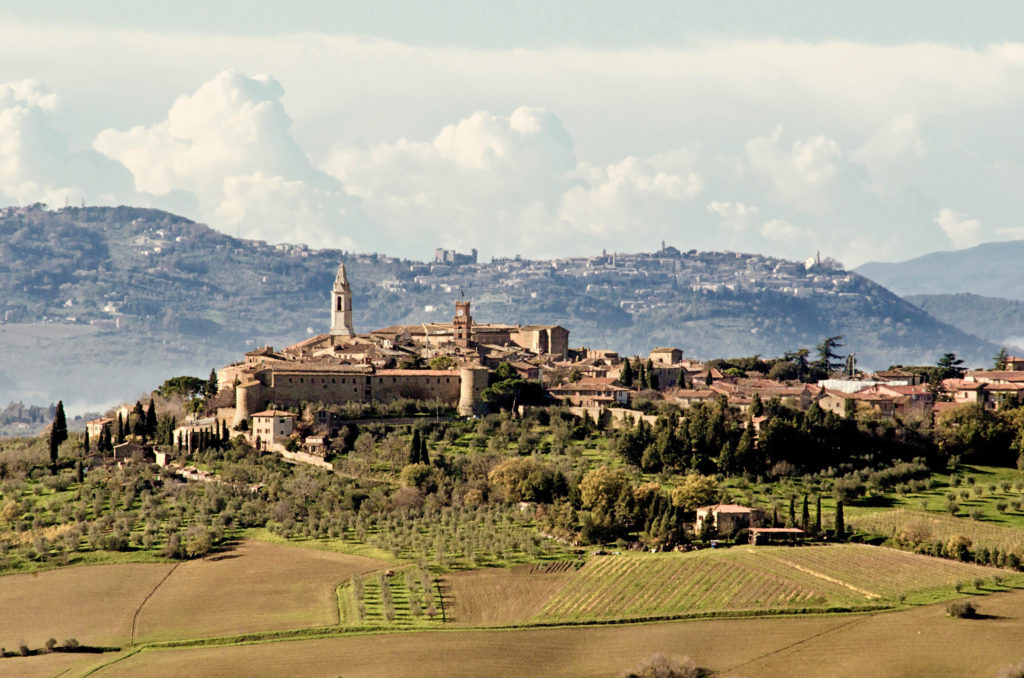
Applied art: the culture of wood
Margaritelli and wood are the two leading characters in a story going back over a century and that started with a strong passion for this noble and precious material. A journey that began in the Umbria region (in the throbbing heart of Italy), following the railways that united Italy in the nineteen-fifties, through the forests of Burgundy in France, where Margaritelli learnt the secrets of age-old forestry and respect for the rhythms of Nature and that led to the creation of Listone Giordano, now a benchmark for top-of-the-range wooden flooring.
The combination of this passion for wood and technological research have now written a new chapter in this long and fascinating story. Listone Giordano Atelier is a place where unique products are created in an ideal synthesis of state-of-the-art technology and the revival of the age-old values of crafted wood. The colors and surface treatments of the Heritage collection draw inspiration from the ancient stones, monuments and paysage surrouding the cities expolored in this uplifting journey.
The Atlier workshop opens its doors to attract curious visitors and travellers from all over the world, always willing to tread new and unusual customisation paths.
